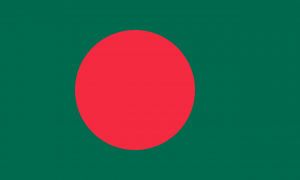Difference between revisions of "Language/Bengali/Culture/Festivals"
m (Quick edit) |
m (Quick edit) |
||
| Line 63: | Line 63: | ||
* [[Language/Bengali/Culture/Bangladesh-Timeline|Bangladesh Timeline]] | * [[Language/Bengali/Culture/Bangladesh-Timeline|Bangladesh Timeline]] | ||
* [[Language/Bengali/Culture/Traditional-Music|Traditional Music]] | * [[Language/Bengali/Culture/Traditional-Music|Traditional Music]] | ||
<span class='maj'></span> | |||
==Sources== | |||
* [https://www.amazon.com/Bengali-Cooking-Festivals-Chitrita-Banerji/dp/1897959508 Bengali Cooking: Seasons and Festivals: Banerji, Chitrita, Madison ...] | |||
{{Bengali-Page-Bottom}} | {{Bengali-Page-Bottom}} | ||
Revision as of 22:20, 14 March 2023
As a Bengali language teacher with more than 20 years of experience, I believe that cultural context is key to understanding and appreciating a language. In this lesson, we will explore the different festivals celebrated in Bengal and their cultural significance.
Festivals in Bengal
Bengal, a region in South Asia, comprises the Indian state of West Bengal and the country Bangladesh. The region is known for its rich cultural heritage and diverse festivals. These festivals are an important part of the Bengali identity and are deeply rooted in the region's history and mythology.
Durga Puja
Durga Puja, also known as Navratri, is the biggest and most widely celebrated festival in Bengal. It is a 10-day festival that celebrates the victory of the goddess Durga over the evil demon Mahishasura. During this festival, pandals (elaborate temporary structures) are set up across the city, and people flock in large numbers to offer prayers and seek blessings from the goddess. The festival is also a time for socializing, feasting, and shopping, with people buying new clothes and indulging in delicious food.
Pohela Boishakh
Pohela Boishakh, also known as Bengali New Year, is celebrated on the 14th of April every year. Bengalis consider this day to be auspicious, and it marks the beginning of a new year. The day is celebrated with much pomp and grandeur, with people decking up in traditional attire and taking part in cultural programs and parades. The festival is a reminder of the region's rich literary and cultural heritage and is a celebration of the Bengali identity.
Eid-ul-Fitr
Eid-ul-Fitr is the most important festival for the Muslim community in Bengal. It is celebrated after the holy month of Ramadan and marks the end of fasting. The festival is an occasion for families and friends to come together and celebrate with a grand feast. People dress up in new clothes and exchange gifts with loved ones. The festival is a celebration of love, brotherhood, and unity.
Diwali
Diwali, also known as the Festival of Lights, is celebrated by the Hindu community in Bengal. It is a 5-day festival that symbolizes the triumph of good over evil. During this festival, people decorate their houses with colorful lights and diyas (earthen lamps). They also burst firecrackers and exchange sweets and gifts with friends and family. The festival is a time for joy and togetherness and spreads the message of love and hope.
Festivals Table
Here is a table summarizing some of the major festivals celebrated in Bengal:
| Bengali | Pronunciation | English Translation |
|---|---|---|
| Durga Puja | durga pujo | Durga Puja |
| Pohela Boishakh | pohela boishakh | Bengali New Year |
| Eid-ul-Fitr | eid-ul-fitr | Festival of Breaking the Fast |
| Diwali | dewali | Festival of Lights |
Conclusion
In conclusion, festivals are an integral part of the Bengali culture and serve as an important means of social cohesion and identity formation. By learning about these festivals, one can gain a deeper understanding of the region's history, myths, and values. As a student of Bengali, it is essential to appreciate and respect these cultural aspects to develop a more holistic understanding of the language and its speakers.
Related Lessons
- History of Bengal
- Cuisine
- Idioms
- Famous Bengali Writers
- Art and Crafts
- Proverbs
- Bangladesh Timeline
- Traditional Music
Sources
